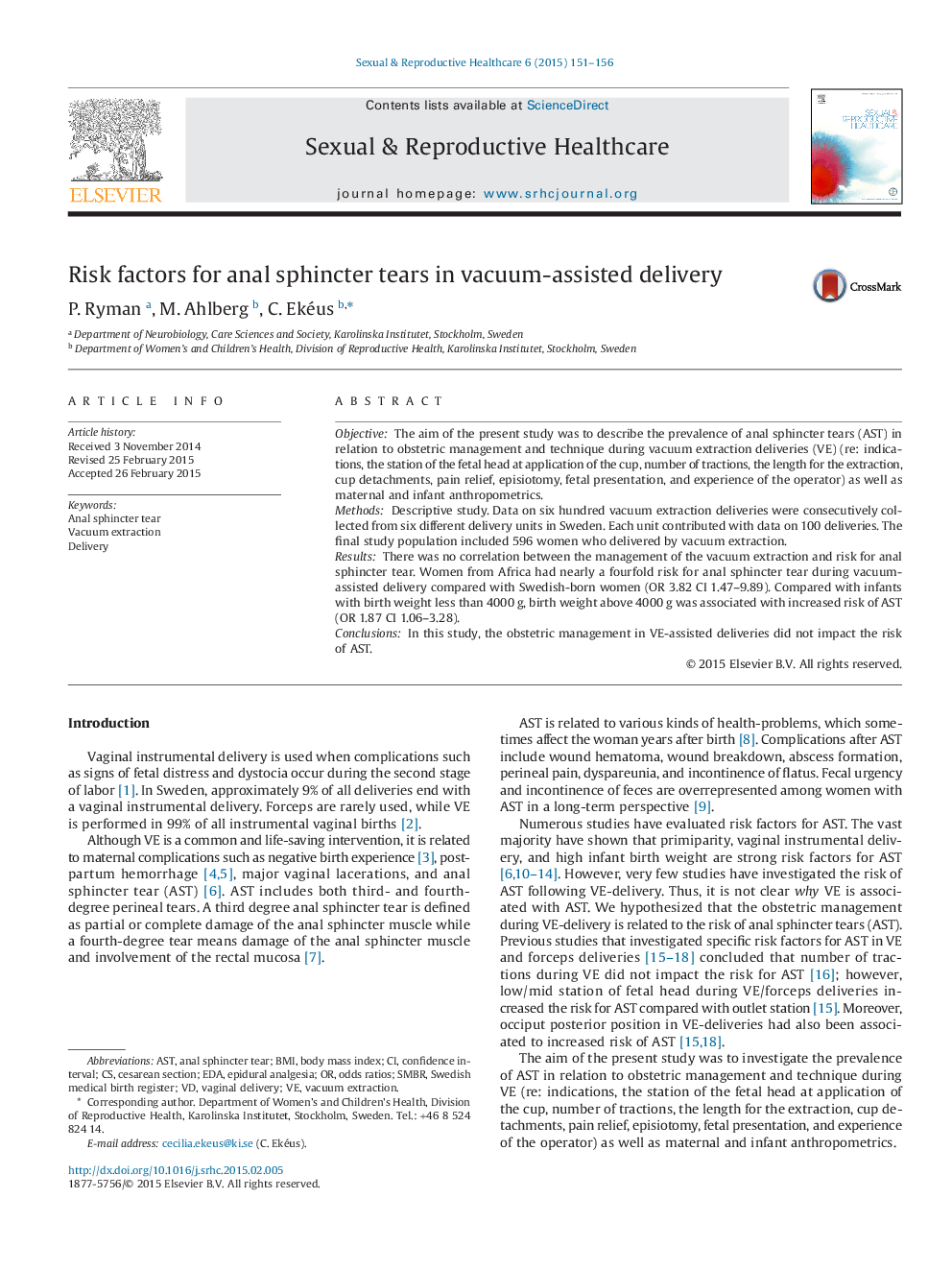| کد مقاله | کد نشریه | سال انتشار | مقاله انگلیسی | نسخه تمام متن |
|---|---|---|---|---|
| 2635593 | 1137337 | 2015 | 6 صفحه PDF | دانلود رایگان |
• In vacuum-assisted deliveries, high birth weight and African ethnicity were related to anal sphincter tear.
• The obstetric management of the vacuum extraction did not significantly influence risk.
• Primiparity, that is a known risk factor for AST in non-instrumental deliveries, was in this study, where all women were delivered by VE, not significantly related to AST.
ObjectiveThe aim of the present study was to describe the prevalence of anal sphincter tears (AST) in relation to obstetric management and technique during vacuum extraction deliveries (VE) (re: indications, the station of the fetal head at application of the cup, number of tractions, the length for the extraction, cup detachments, pain relief, episiotomy, fetal presentation, and experience of the operator) as well as maternal and infant anthropometrics.MethodsDescriptive study. Data on six hundred vacuum extraction deliveries were consecutively collected from six different delivery units in Sweden. Each unit contributed with data on 100 deliveries. The final study population included 596 women who delivered by vacuum extraction.ResultsThere was no correlation between the management of the vacuum extraction and risk for anal sphincter tear. Women from Africa had nearly a fourfold risk for anal sphincter tear during vacuum-assisted delivery compared with Swedish-born women (OR 3.82 CI 1.47–9.89). Compared with infants with birth weight less than 4000 g, birth weight above 4000 g was associated with increased risk of AST (OR 1.87 CI 1.06–3.28).ConclusionsIn this study, the obstetric management in VE-assisted deliveries did not impact the risk of AST.
Journal: Sexual & Reproductive Healthcare - Volume 6, Issue 3, October 2015, Pages 151–156
